Cover
FM
Copyright
Table of Contents
Preface
Chapter 1: Lists, Stacks, and Queues
Introduction
Contiguous Versus Linked Data Structures
Contiguous Data Structures
Linked Data Structures
Comparison
Limitations of C-style Arrays
std::array
Exercise 1: Implementing a Dynamic Sized Array
Exercise 2: A General-Purpose and Fast Data Storage Container Builder
std::vector
std::vector – Variable Length Array
Allocators for std::vector
std::forward_list
Inserting and Deleting Elements in forward_list
Other Operations on forward_list
Exercise 3: Conditional Removal of Elements from a Linked List Using remove_if
Iterators
Exercise 4: Exploring Different Types of Iterators
Exercise 5: Building a Basic Custom Container
Activity 1: Implementing a Song Playlist
std::list
Common Functions for std::list
Exercise 6: Insertion and Deletion Functions for std::list
Bidirectional Iterators
Iterator Invalidation for Different Containers
Activity 2: Simulating a Card Game
std::deque – Special Version of std::vector
The Structure of Deque
Container Adaptors
std::stack
std::queue
std::priority_queue
Iterators for Adaptors
Benchmarking
Activity 3: Simulating a Queue for a Shared Printer in an Office
Summary
Chapter 2: Trees, Heaps, and Graphs
Introduction
Non-Linear Problems
Hierarchical Problems
Cyclic Dependencies
Tree – It's Upside Down!
Exercise 7: Creating an Organizational Structure
Traversing Trees
Exercise 8: Demonstrating Level Order Traversal
Variants of Trees
Binary Search Tree
Time Complexities of Operations on a Tree
Exercise 9: Implementing a Binary Search Tree
Balanced Tree
N-ary Tree
Activity 4: Create a Data Structure for a Filesystem
Heaps
Heap Operations
Exercise 10: Streaming Median
Activity 5: K-Way Merge Using Heaps
Graphs
Representing a Graph as an Adjacency Matrix
Exercise 11: Implementing a Graph and Representing it as an Adjacency Matrix
Representing a Graph as an Adjacency List
Exercise 12: Implementing a Graph and Representing it as an Adjacency List
Summary
Chapter 3: Hash Tables and Bloom Filters
Introduction
Hash Tables
Hashing
Exercise 13: Basic Dictionary for Integers
Collisions in Hash Tables
Close Addressing – Chaining
Exercise 14: Hash Table with Chaining
Open Addressing
Perfect Hashing – Cuckoo Hashing
Exercise 15: Cuckoo Hashing
C++ Hash Tables
Exercise 16: Hash Tables Provided by STL
Activity 6: Mapping Long URLs to Short URLs
Bloom Filters
Exercise 17: Creating Bloom Filters
Activity 7: Email Address Validator
Summary
Chapter 4: Divide and Conquer
Introduction
Binary Search
Exercise 18: Binary Search Benchmarks
Activity 8: Vaccinations
Understanding the Divide-and-Conquer Approach
Sorting Using Divide and Conquer
Merge Sort
Exercise 19: Merge Sort
Quicksort
Exercise 20: Quicksort
Activity 9: Partial Sorting
Linear Time Selection
Exercise 21: Linear Time Selection
C++ Standard Library Tools for Divide and Conquer
Dividing and Conquering at a Higher Abstraction Level – MapReduce
The Map and Reduce Abstractions
Exercise 22: Map and Reduce in the C++ Standard Library
Integrating the Parts – Using a MapReduce Framework
Exercise 23: Checking Primes Using MapReduce
Activity 10: Implementing WordCount in MapReduce
Summary
Chapter 5: Greedy Algorithms
Introduction
Basic Greedy Algorithms
Shortest-Job-First Scheduling
Exercise 24: Shortest-Job-First Scheduling
The Knapsack Problem(s)
The Knapsack Problem
The Fractional Knapsack Problem
Exercise 25: Fractional Knapsack Problem
Activity 11: The Interval Scheduling Problem
Requirements for Greedy Algorithms
The Minimum Spanning Tree (MST) Problem
Disjoint-Set (or Union-Find) Data Structures
Exercise 26: Kruskal's MST Algorithm
The Vertex Coloring Problem
Exercise 27: Greedy Graph Coloring
Activity 12: The Welsh-Powell Algorithm
Summary
Chapter 6: Graph Algorithms I
Introduction
The Graph Traversal Problem
Breadth-First Search
Exercise 28: Implementing BFS
Depth-First Search
Exercise 29: Implementing DFS
Activity 13: Finding out Whether a Graph is Bipartite Using DFS
Prim's MST Algorithm
Exercise 30: Prim's Algorithm
Dijkstra's Shortest Path Algorithm
Exercise 31: Implementing Dijkstra's Algorithm
Activity 14: Shortest Path in New York
Summary
Chapter 7: Graph Algorithms II
Introduction
Revisiting the Shortest Path Problem
The Bellman-Ford Algorithm
Exercise 32: Implementing the Bellman-Ford Algorithm (Part I)
The Bellman-Ford Algorithm (Part II) – Negative Weight Cycles
Exercise 33: Implementing the Bellman-Ford Algorithm (Part II)
Activity 15: Greedy Robot
Johnson's Algorithm
Exercise 34: Implementing Johnson's Algorithm
Activity 16: Randomized Graph Statistics
Strongly Connected Components
Connectivity in Directed and Undirected Graphs
Kosaraju's Algorithm
Exercise 35: Implementing Kosaraju's Algorithm
Activity 17: Maze-Teleportation Game
Choosing the Right Approach
Summary
Chapter 8: Dynamic Programming I
Introduction
What Is Dynamic Programming?
Memoization – The Top-Down Approach
Tabulation – the Bottom-Up Approach
Subset Sum Problem
Solving the Subset Sum Problem – Step 1: Evaluating the Need for DP
Step 2 – Defining the States and the Base Cases
Step 2.a: Brute Force
Exercise 36: Solving the Subset Sum Problem by Using the Brute-Force Approach
Step 2.b: Optimizing Our Approach – Backtracking
Exercise 37: Solving the Subset Sum Problem by Using Backtracking
Step 3: Memoization
Devising a Caching Scheme
Exercise 38: Solving the Subset Sum Problem by Using Memoization
Step 4: Tabulation
Exercise 39: Solving the Subset Sum Problem by Using Tabulation
Activity 18: Travel Itinerary
Dynamic Programming on Strings and Sequences
The Longest Common Subsequence Problem
Exercise 40: Finding the Longest Common Subsequence by Using the Brute-Force Approach
First Steps Toward Optimization – Finding the Optimal Substructure
Activity 19: Finding the Longest Common Subsequence by Using Memoization
From Top-Down to Bottom-Up – Converting the Memoized Approach into a Tabulated Approach
Activity 20: Finding the Longest Common Subsequence Using Tabulation
Activity 21: Melodic Permutations
Summary
Chapter 9: Dynamic Programming II
Introduction
An Overview of P versus NP
Reconsidering the Subset Sum Problem
The Knapsack Problem
0-1 Knapsack – Extending the Subset Sum Algorithm
Exercise 41: 0-1 Knapsack Problem
Unbounded Knapsack
State Space Reduction
Exercise 42: Unbounded Knapsack
Activity 22: Maximizing Profit
Graphs and Dynamic Programming
Reconsidering the Bellman-Ford Algorithm
Approaching the Shortest Path Problem as a DP Problem
Exercise 43: Single-Source Shortest Paths (Memoization)
All-Pairs Shortest Path
The Floyd-Warshall Algorithm
Exercise 44: Implementing the Floyd-Warshall Algorithm
Activity 23: Residential Roads
Summary
Appendix
Index

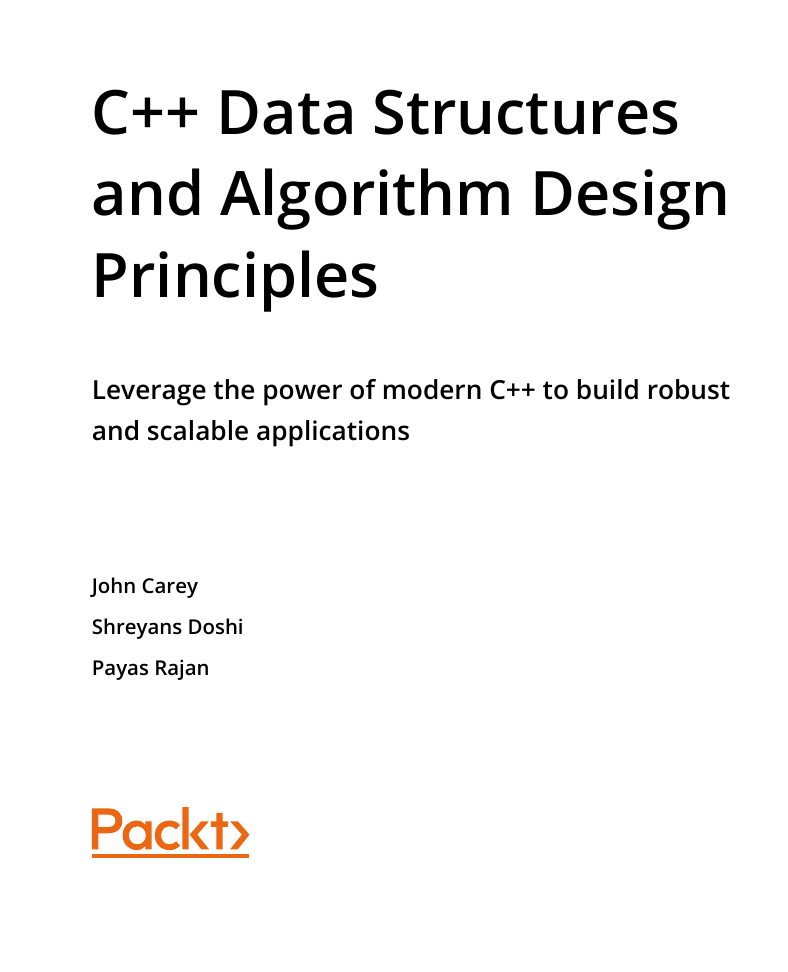
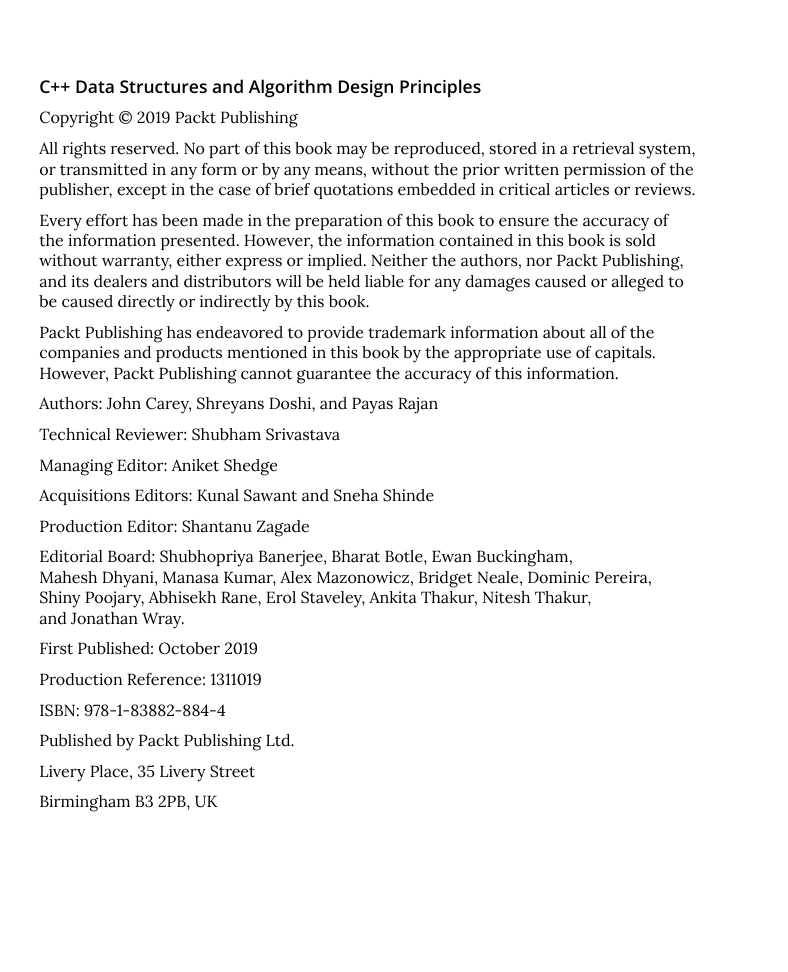
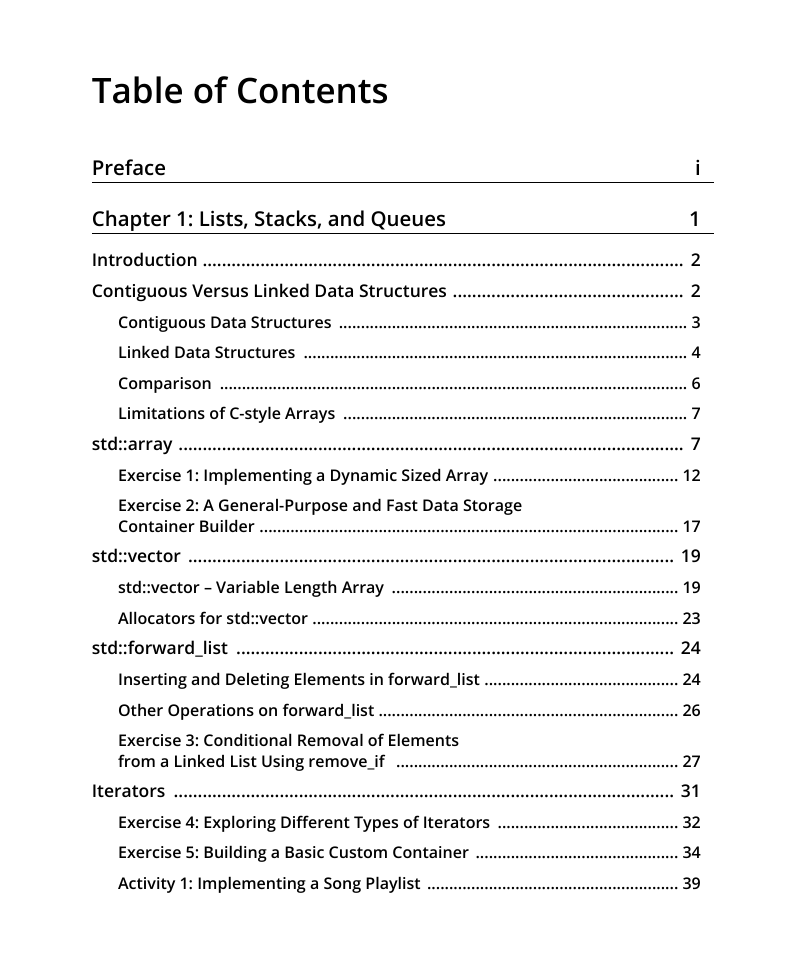

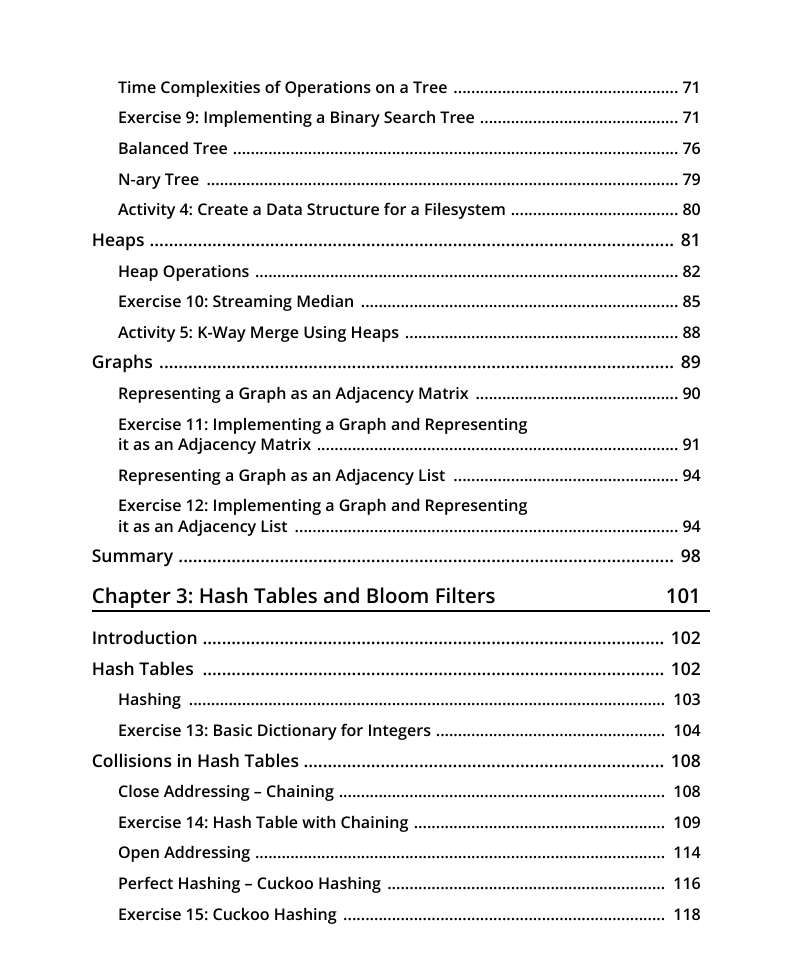
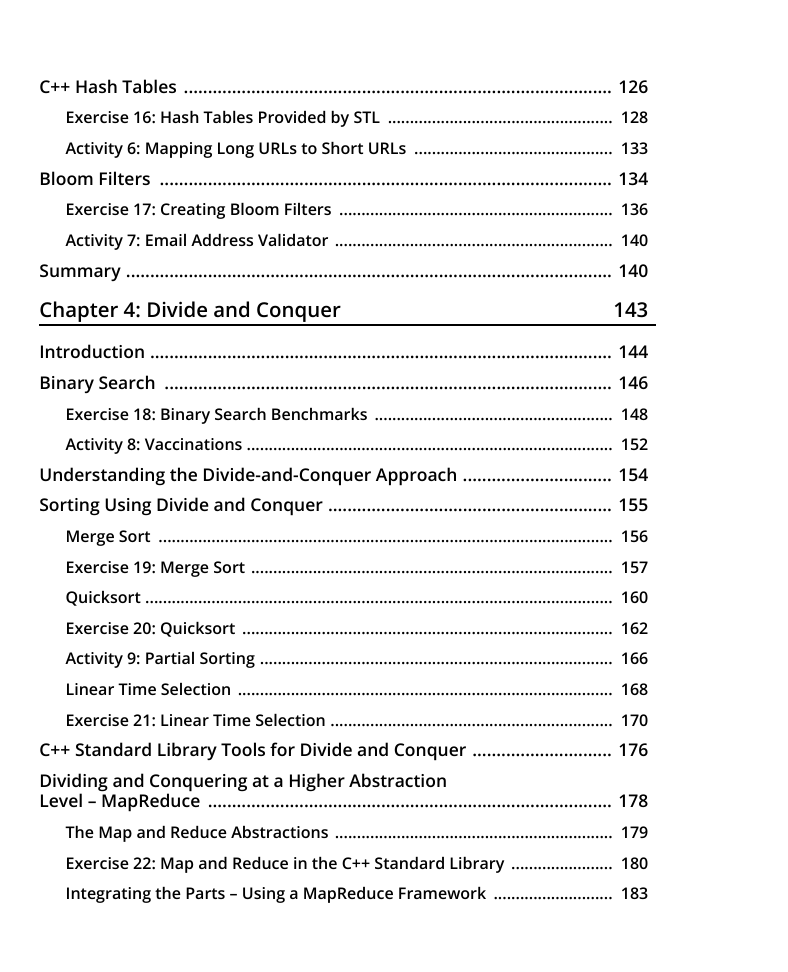
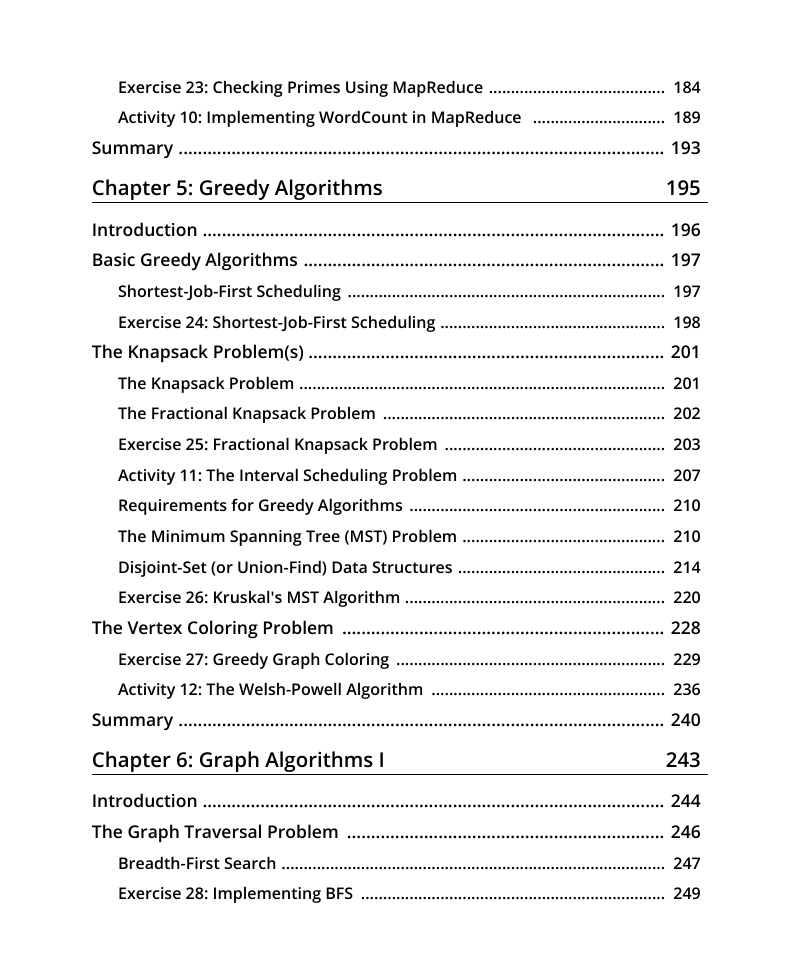








 2023年江西萍乡中考道德与法治真题及答案.doc
2023年江西萍乡中考道德与法治真题及答案.doc 2012年重庆南川中考生物真题及答案.doc
2012年重庆南川中考生物真题及答案.doc 2013年江西师范大学地理学综合及文艺理论基础考研真题.doc
2013年江西师范大学地理学综合及文艺理论基础考研真题.doc 2020年四川甘孜小升初语文真题及答案I卷.doc
2020年四川甘孜小升初语文真题及答案I卷.doc 2020年注册岩土工程师专业基础考试真题及答案.doc
2020年注册岩土工程师专业基础考试真题及答案.doc 2023-2024学年福建省厦门市九年级上学期数学月考试题及答案.doc
2023-2024学年福建省厦门市九年级上学期数学月考试题及答案.doc 2021-2022学年辽宁省沈阳市大东区九年级上学期语文期末试题及答案.doc
2021-2022学年辽宁省沈阳市大东区九年级上学期语文期末试题及答案.doc 2022-2023学年北京东城区初三第一学期物理期末试卷及答案.doc
2022-2023学年北京东城区初三第一学期物理期末试卷及答案.doc 2018上半年江西教师资格初中地理学科知识与教学能力真题及答案.doc
2018上半年江西教师资格初中地理学科知识与教学能力真题及答案.doc 2012年河北国家公务员申论考试真题及答案-省级.doc
2012年河北国家公务员申论考试真题及答案-省级.doc 2020-2021学年江苏省扬州市江都区邵樊片九年级上学期数学第一次质量检测试题及答案.doc
2020-2021学年江苏省扬州市江都区邵樊片九年级上学期数学第一次质量检测试题及答案.doc 2022下半年黑龙江教师资格证中学综合素质真题及答案.doc
2022下半年黑龙江教师资格证中学综合素质真题及答案.doc